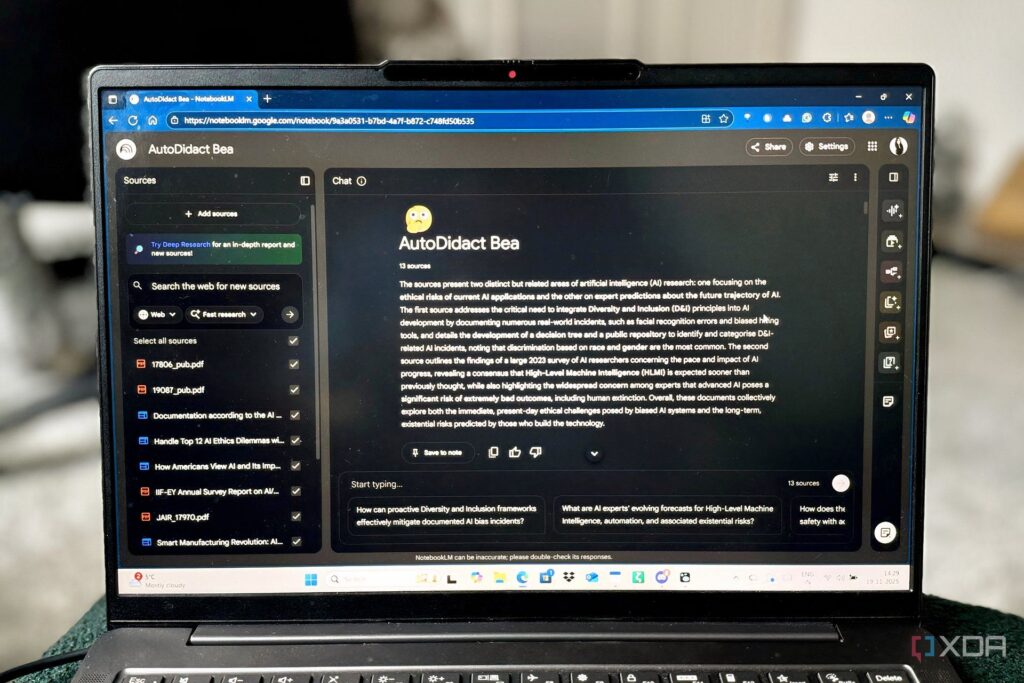
UPDATE: Students are revolutionizing their study sessions by leveraging NotebookLM in ways that enhance learning retention and engagement. Just revealed, this innovative approach shifts from passive summarization to active inquiry, allowing users to deepen their understanding of complex subjects.
Latest data shows that many learners initially misused NotebookLM by treating it as a mere summarizer. They would upload lengthy PDFs and request condensed bullet points, believing they were being productive. However, as users quickly discovered, this method often led to poor retention. A recent study highlighted that students could recall less than half of the material they “studied” using this passive technique.
Authorities in educational technology urge users to rethink their strategies. Instead of simply summarizing content, students are now using NotebookLM as a Socratic tutor, prompting better questions that stimulate critical thinking and comprehension. As one student noted, “The shift in my approach has made all the difference. I’m not just reading; I’m engaging with the material.”
The cognitive trap of summarization has proven detrimental to learning. When NotebookLM generates a clean summary, it may feel satisfactory, but it doesn’t compel deep engagement with the content. This lack of interaction can lead to gaps in understanding, especially in challenging fields such as behavioral psychology and decision-making frameworks.
Shifting gears, students now prompt NotebookLM to quiz them instead. Users upload notes or source materials and request challenging questions tailored to their understanding. This new strategy has shown immediate benefits. For example, students are asking NotebookLM to generate questions that require synthesis and application of concepts, significantly improving their long-term retention.
One student shared, “When NotebookLM asked me how the OODA loop differs from the WRAP framework, I realized I needed to reassess my understanding. This approach turned gaps into focal points for my studies.” This method mirrors expert learning techniques, emphasizing constant self-testing and active engagement.
Additionally, students are harnessing NotebookLM to create concept maps, visual diagrams that illustrate relationships between key ideas. This dynamic method encourages learners to think structurally, leading to deeper insights. By mapping out connections between concepts like cognitive load theory and time management, users can see how different areas overlap and support one another.
As one user put it, “Using concept maps enables me to visualize my learning in a way that summaries simply can’t.” This visualization not only aids in retention but also provides a solid study tool for retrieval practice.
To replicate this effective workflow, students are advised to follow these steps:
1. Upload source material to NotebookLM, including articles and notes.
2. Request questions that challenge understanding rather than summaries.
3. Answer these questions in your own words without referencing the source.
4. Have NotebookLM evaluate your responses and highlight any inaccuracies.
5. Ask for a concept map to visualize relationships between key ideas.
6. Continuously iterate by uploading new sources and refining your understanding.
This transformative approach positions NotebookLM as a strategic partner in learning rather than a tool for quick fixes. While it may take more time initially, the focus is on depth of understanding rather than speed.
In a world flooded with AI-generated summaries, this shift toward active engagement is crucial. With students now equipped to tackle complex material more effectively, the implications for academic success are significant. The emphasis on retention and real-world application ensures that learners are not just consuming information but truly understanding it.
Stay tuned for further developments as this trend continues to reshape how students engage with learning tools like NotebookLM.






